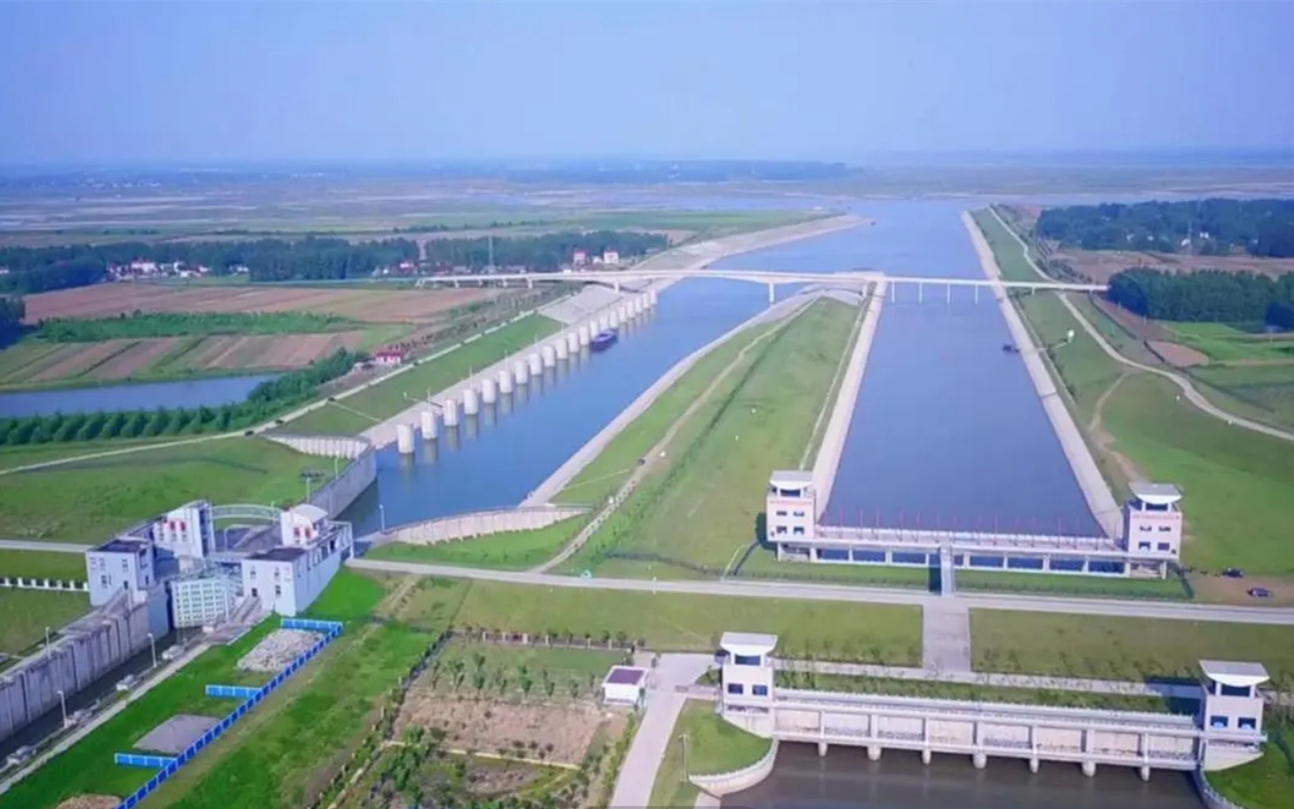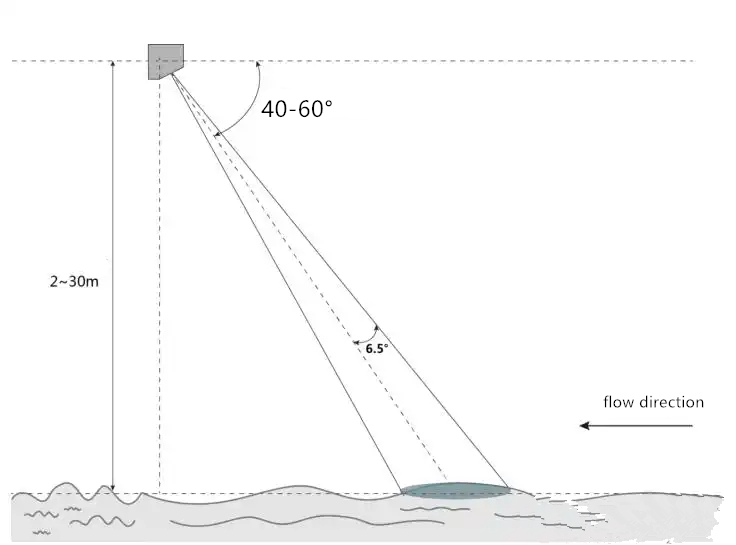Water flow sensor: Working Principle and Advantage Analysis

In the fields of smart water conservancy and urban flood control, water flow sensor, as a new generation of non-contact flow measurement devices, have gradually replaced traditional mechanical current meters. According to the industry report released by the International Association for Hydro-Environment Engineering and Research (IAHR) in 2023, the penetration rate of radar technology in the global hydrological monitoring equipment market has reached 62%. Its core advantage lies in breaking through the physical limitations of contact measurement. This article will deeply analyze the technical principles of water flow sensor and, combined with the ISO 18365:2016 international standard, systematically discuss their unique value in modern hydrological monitoring.
I. Core Technical Principles of Water flow sensor
1.1 Physical Basis of the Doppler Effect
Water flow sensor operate based on the Doppler frequency shift principle. When a 24GHz/60GHz millimeter-wave beam is emitted towards the water surface at an angle θ (usually 45 – 60°), the frequency change of the reflected wave generated by the moving water body conforms to the formula:
Δf = (2v·cosθ)/λ
Where:
- Δf: Frequency shift amount (Hz)
- v: Flow velocity (m/s)
- λ: Radar wavelength (mm)
Through the precise calculation of the frequency shift amount by a DSP (Digital Signal Processor), a measurement accuracy of ±0.03m/s can be achieved (meeting the OIML R117 Class 0.5 standard). This high-precision measurement ability makes the application of water flow sensor more reliable in complex hydrological environments. In addition, the choice of millimeter-wave technology not only improves the measurement sensitivity but also significantly enhances the anti-interference performance of the device, enabling it to operate stably under harsh weather conditions.
1.2 Key Technical Process of Signal Processing
To ensure the accuracy and reliability of measurement data, water flow sensor adopt a variety of advanced signal processing technologies:
- Waveform Recognition: The FMCW (Frequency Modulated Continuous Wave) technology is used to distinguish static interference, effectively avoiding the influence of fixed objects (such as bridges and shore structures) on the measurement results.
- Spectrum Analysis: The 4096-point FFT algorithm is utilized to extract the effective frequency shift signal, enabling the precise capture of weak signals.
- Dynamic Filtering: The Kalman filter algorithm can effectively eliminate wave interference, ensuring stable measurement values even in rough water conditions.
- Velocity Synthesis: The three-dimensional velocity vector compensation algorithm further improves the measurement accuracy through multi-dimensional analysis of the flow velocity, especially showing excellent performance under complex flow conditions.

II. Technical Analysis of Five Core Advantages
2.1 Breakthrough in Non-contact Measurement
|
Parameters |
Contact Current Meter |
Water Flow Sensor |
|
Installation Height |
Needs to be immersed in water |
0.3 – 30m |
|
Maintenance Cycle |
Monthly cleaning |
5-year maintenance-free |
|
Applicable Scenarios |
Calm water bodies |
Floods/Ice surfaces |
Data source: Technical Specifications for Hydrological Monitoring (SL 337 – 2020) issued by the Ministry of Water Resources
Compared with traditional contact current meters, water flow sensor have achieved a major breakthrough in the measurement method. Contact current meters need to be immersed in water for measurement, which is not only inconvenient for installation but also unable to work properly in some complex water environments, such as floods and ice surfaces. In addition, due to direct contact with the water body, contact current meters are easily affected by impurities in the water and require monthly cleaning and maintenance, increasing operating costs and work difficulty.
Water flow sensor, on the other hand, adopt a non-contact measurement method. The installation height can be flexibly adjusted between 0.3 – 30m, avoiding direct contact with the water body. This enables it to work normally in harsh environments such as floods and ice surfaces, greatly expanding the applicable scenarios. At the same time, its 5-year maintenance-free feature effectively reduces maintenance costs and workload, improving the stability and reliability of monitoring.
2.2 All-weather Operation Capability
Water flow sensor have a strong all-weather operation capability, mainly reflected in the following aspects:
- Adaptability to Extreme Weather: The IP68 protection level ensures that the device can operate normally within the temperature range of -40°C to +70°C, suitable for various climatic conditions.
- Penetration in Complex Environments: Microwave technology can penetrate rainfall of up to 50mm/h, ensuring reliable measurement data even under severe weather conditions such as heavy rain.
- Anti-interference Design: The adaptive noise suppression function compliant with the EN 302729 standard enables the device to maintain stable performance in high-frequency electromagnetic environments.
2.3 Intelligent Data System
The intelligent features of water flow sensor make them an ideal choice for modern hydrological monitoring. The typical system architecture includes a sensor layer, an edge computing gateway, and a cloud platform (MQTT protocol), supporting the following functions:
- Real-time generation of water level – flow velocity curves, providing intuitive data references for decision-makers.
- Utilizing the peak flow prediction algorithm to issue early warnings of potential risks, enhancing the flood control emergency response efficiency.
- The blockchain-based evidence storage function for abnormal data ensures the authenticity and traceability of monitoring data, providing a reliable basis for scientific research and legal arbitration.
III. In-depth Analysis of Industry Application Scenarios
3.1 Flood Warning System
In the flood control practice of the Pearl River Basin in 2022, water flow sensor played a huge role. By reasonably deploying 87 water flow sensor within the basin, an efficient flood warning system was constructed. This system successfully reduced the warning response time to 15 minutes. Compared with previous monitoring systems, the timeliness of warnings was greatly improved. At the same time, the flow rate prediction accuracy increased to 92%, enabling relevant departments to more accurately grasp the development trend of floods and make advance preparations for flood control. According to statistics, the application of this system reduced economic losses by approximately 730 million yuan, fully demonstrating the important value of water flow sensor in flood control and disaster reduction.
3.2 Urban Drainage Monitoring
In a smart water project in Beijing, the radar array networking technology was adopted for urban drainage monitoring. This technology constructed a dense monitoring network in the urban drainage system at a deployment density of 3 monitoring points per square kilometer. The data transmission adopted the NB-IoT + LoRa dual-mode communication method, which combines the advantages of NB-IoT’s wide coverage and low power consumption with LoRa’s long-distance and high bandwidth, ensuring that data can be stably and quickly transmitted to the monitoring center.
Through the application of radar array networking technology, the waterlogging warning accuracy of this project increased by 40%, enabling more timely and accurate prediction of urban waterlogging, providing strong decision-making support for urban drainage management departments, and effectively reducing the impact of waterlogging on urban residents’ lives and urban infrastructure.
IV. Technical Guide for Equipment Selection
4.1 Comparison Table of Key Parameters
|
Parameters |
Basic Type |
Professional Type |
Research Type |
|
Velocity Measurement Range |
0.1 – 15m/s |
0.05 – 20m/s |
0.01 – 25m/s |
|
Frequency |
24GHz |
60GHz |
77GHz |
|
Beam Angle |
12° |
6° |
3° |
|
Protection Level |
IP67 |
IP68 |
IP69K |
Different models of water flow sensor are optimized for different application scenarios. Users can select the appropriate device type according to specific requirements.
4.2 Industry Adaptation Solutions
- Water Conservancy Projects: It is recommended to choose the 60GHz + dual-polarized antenna model to meet the high-precision measurement requirements in complex hydrological environments.
- Environmental Protection Monitoring: An integrated device with a water quality compensation algorithm is recommended, taking into account both flow velocity measurement and water quality monitoring functions.
- Research Institutions: It is necessary to have original data output interfaces (RS485/Ethernet) for in-depth data analysis and research.
V. Outlook on Technical Development Trends
With the continuous progress of science and technology, the technology of water flow sensor is also evolving continuously:
- AI-Enhanced Algorithms: CNN neural networks are used to identify flow state characteristics, further improving measurement accuracy and intelligence levels.
- Photon Radar: 300GHz ultra-high-frequency devices based on silicon photonics technology are under development, promising higher resolution and longer detection distances.
- Quantum Measurement: The prototype of a quantum current meter based on atomic interference is in the exploration stage, which may bring revolutionary changes to measurement technology in the future.
The technological evolution of water flow sensor is reshaping the hydrological monitoring system. According to the prediction of Global Market Insights, the global market size is expected to reach $2.7 billion by 2027, with a compound annual growth rate of 11.3%. It is recommended that relevant units pay close attention to cutting-edge technologies such as multi-sensor fusion and edge intelligent computing to seize the strategic opportunities of new infrastructure construction.
